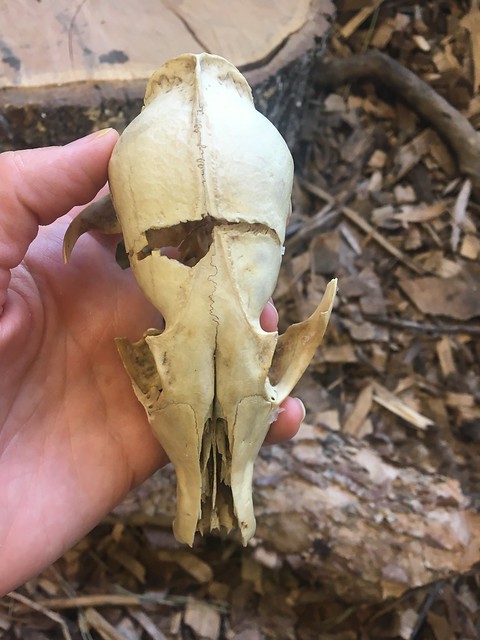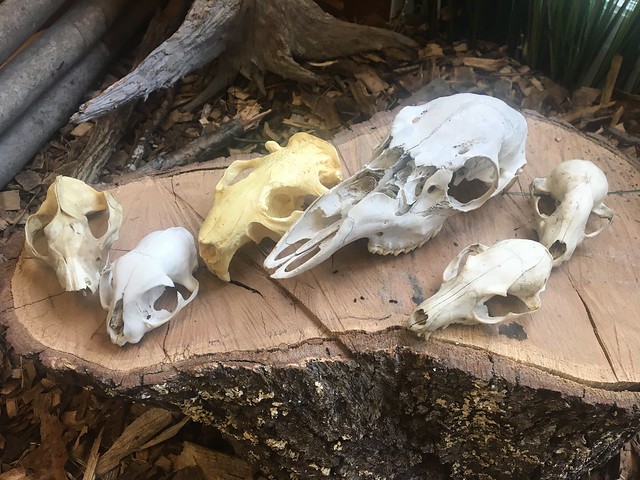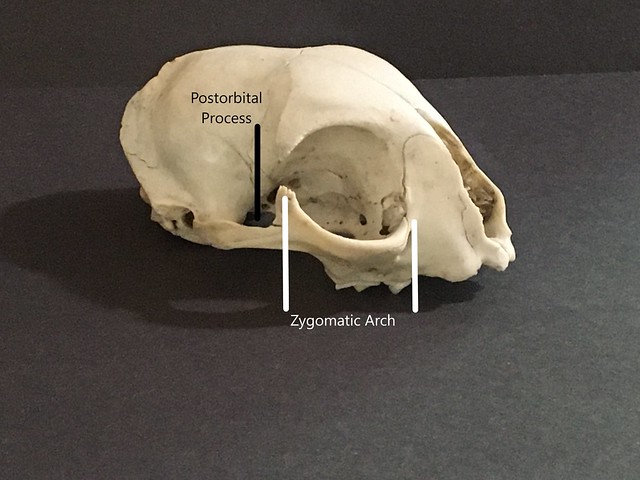Read Our Blogs
What Lies Beneath - Skull Identification Part I
Shared by Rebecca Whalen, as Guest Blogger.
I have always enjoyed studying the random bits and pieces left behind by an animal, there’s just something so special about getting a glimpse inside an animal's secret world.
Out of all the feathers, scat, chewed pinecones, shed snakeskin, and other faunal elements I’ve found over the years, bones are my favorite,especially skulls.
Randomly happening upon a skull is only part of the excitement,correctly identifying which creature it came from is equally fulfilling.

Have you ever found an animal skull? How did it make you feel?
Were you able to identify/recognize what animal it came from?
Let’s take a look at skulls of common backyard wildlife and learn easy ways to identify them.
The eyes have it, my dear:
Take a look at eye placement. As the old saying goes, “eyes in front, animal hunts. Eyes on the side, animal hides." Knowing whether or not an animal is a predator is a good first step in identification.

Side view of skulls, hunters or hiders?
Size Matters:
Skull size/length can help us narrow down what animal left it behind.

This skull is 9.5 inches. What large mammal could be found in your backyard? What do you think? (Answer below)
My what big teeth you have!
Teeth are adapted to help an animal eat and each animal has a special “dentition” or arrangement of teeth, that tell us what it eats. Knowing an herbivore (plant eater) from a carnivore (meat eater) from an omnivore (animal matter and plant eater) can help with identification.

Deer/herbivores (top)and Opossum/omnivore(bottom)
Knowing what type of teeth an animal has is only half the battle. To aid in identification, counting teeth is extremely helpful. Think about your teeth. Most humans have 2 upper and lower incisors, 2 upper and lower canine, 2 upper and lower premolars, and 3 upper and lower molars, giving us 16 teeth on top and 16 teeth on the bottom for a total of 32 teeth.
Some skulls are easier to identify than others, or at least it’s easy to say “oh, that came from some rodent”. If you want to know WHICH rodent, I highly suggest purchasing a book that uses a dichotomous key to identify skulls.
If you’re not familiar, dichotomous means “divided into two parts” and then you answer a series of questions, divided into two or more choices, which help you determine the source of the skull. As you continue, you answer questions about “postorbital process” and “zygomatic arch," which are pretty unfamiliar to most, but luckily the book has a glossary to explain those terms.

Zygomatic / Postorbital
The zygomatic arch are the curved bones below the orbit, or eye socket.
The postorbital process is a bone that marks the back upper edge of the orbit.
Remember-skulls and other bones are rich in calcium and phosphorus, which all animals need. It’s a good idea to leave skulls/bones where you found them for animals to enjoy. Also, collecting any animal or plant is strictly prohibited in Virginia State Parks except by permit from the VSP Headquarters in Richmond, or as allowed by the park during environmental education programming. Remember, take only pictures and leave only footprints.

Can you see the teeth marks in this raccoon skull?
Please look for my future blog, What Lies Beneath Part II. We will explore even more interesting skulls and what you may find on your next adventure into nature. I will also be giving you some tools for identifying your discoveries.
Please let me know in the comments if you’ve come across a skull or need help identify one! For more information on your Virginia State Parks, please click here.
If you have read the article and have a question, please email nancy.heltman@dcr.virginia.gov.
Search for blogs
By Park
Categories
Cabins
Camping
Fishing
History and Culture
Other
Programs and Events
Trails
Volunteers
Water Fun
Archive
2026
2025
2024
2023
2022
2021
2020
2019
2018
2017
2016
2015
2014
2012













